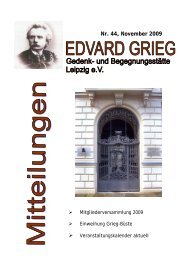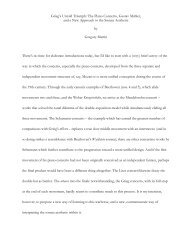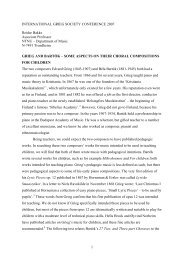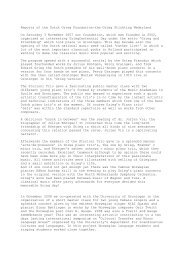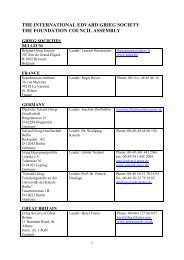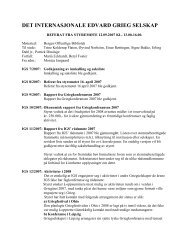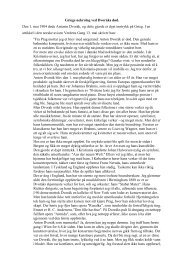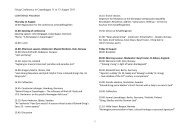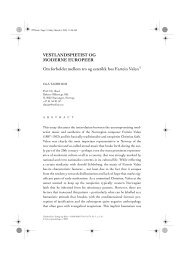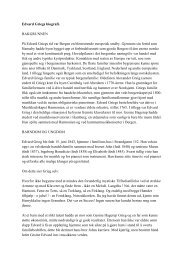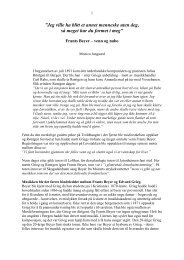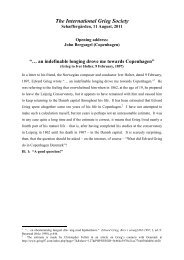Gregory Martin - paper 2007 - Grieg Society
Gregory Martin - paper 2007 - Grieg Society
Gregory Martin - paper 2007 - Grieg Society
You also want an ePaper? Increase the reach of your titles
YUMPU automatically turns print PDFs into web optimized ePapers that Google loves.
most fervent thoughts they had a marked fondness for chromatic lines, each in his<br />
own original way. On this basis I quietly evolved little by little my own sense of<br />
the importance of the chromatic element. . . See [also] Ballade op. 24. 33<br />
Carl Dahlhaus found this combining of centuries-old folksongs with a late nineteenthcentury<br />
harmonic idiom to yield the creation of a dialectic between antiquity and<br />
34<br />
modernity. But more than this, through the juxtaposition of these two elements and<br />
their affiliated historical eras, <strong>Grieg</strong> succeeds in creating a great abyss of time—one of<br />
the most vital requirements in epic discourse, as we have seen. In his application of this<br />
device across his output, he not only accents the pregnant harmonic possibilities of<br />
folksong, but also casts epic light—that is, extraordinary history—on even the shortest of<br />
them. In the Ballade, this dense thematic chromaticism becomes one of the main<br />
elements manipulated in the variations which follow; indeed, some of them show more<br />
alliance with the chromatic nature of the theme than with the folksong itself.<br />
<strong>Grieg</strong>’s awareness of this dichotomy is evidenced by his careful control over its<br />
playing-out as the work unfolds. But the theme is not simply the pairing of a diatonic<br />
melody with a free harmonic structure over a chromatic bass. While the progression<br />
created does certainly suggest an incredibly stretched harmonic language, the vertical<br />
sonorities would be more accurately described as polyphonic coincidences, and new lines<br />
are systematically added as melodic strands dissolve into the texture. <strong>Grieg</strong> has<br />
reinterpreted the melody not as a single voice but rather as the product of a gradually<br />
accruing polyphony. 36 That is, not<br />
35<br />
33 <strong>Grieg</strong>, Letters, 229.<br />
34 See Carl Dahlhaus, Nineteenth-Century Music trans. J. Bradford Robinson (Berkeley, California:<br />
University of California Press, 1989), 310.<br />
35 Also exhibited in the Ballade’s theme is the expansion of registral space from a third to four octaves; this<br />
growth will be mirrored on the global level as the piece progresses.<br />
36 This realization has profound effects on interpretation—the theme should be played not as melody and<br />
accompaniment, but rather with the sense of a string quartet texture.<br />
15



